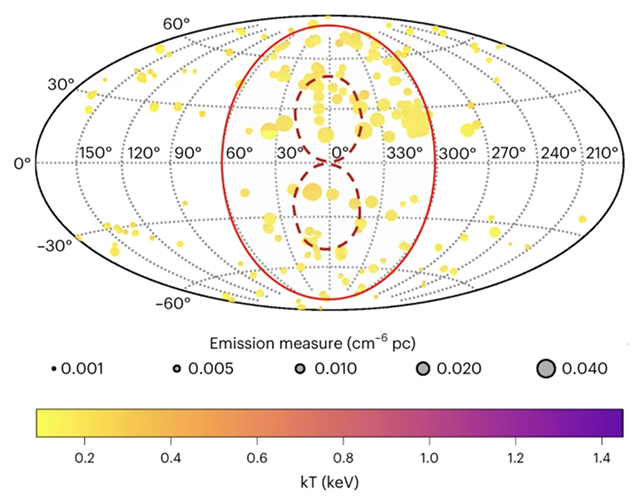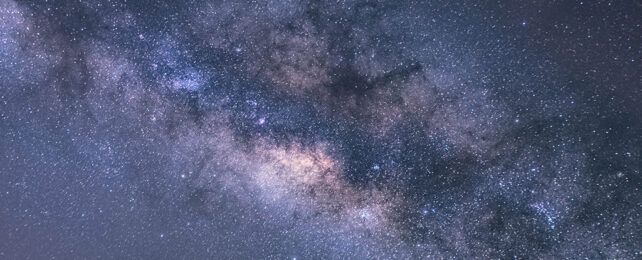Extending high above and below the Milky Way's galactic plane, a pair of huge, symmetrical blobs of gas stretch out like the lobes of a cosmic hourglass, glowing faintly with an X-ray radiance.
They're known as eROSITA bubbles, named after the X-ray telescope that spotted them in 2020, and are located in the Milky Way's massive shell of gas, or 'circumgalactic medium', extending some 45,661 light-years either side of the galactic center.
The energetic gasses making up the bubbles were assumed to have a fairly even, if somewhat high temperature throughout, caused by the shock of its passage through the medium. Though a surprising discovery now makes them seem more complex than first appears.
Data from the Suzaku satellite, run by NASA and the Japanese Aerospace Exploration Agency (JAXA), suggests the X-ray glow of the bubbles isn't because they're hotter than their surrounds as assumed, but rather that the gasses simply have a higher density.
"Our goal was really to learn more about the circumgalactic medium, a place very important in understanding how our galaxy formed and evolved," says astronomer Anjali Gupta, now at Columbus State Community College in Ohio.
"A lot of the regions that we were studying happened to be in the region of the bubbles, so we wanted to see how different the bubbles are when compared to the regions which are away from the bubble."
Based on an analysis of an archive of 230 X-ray observations of the bubbles and the surrounding medium, the researchers found that the previously used method couldn't adequately describe the spread of temperature data.
Previously, a temperature difference between the eROSITA bubbles and the surrounding galactic halo was assumed because of the relative brightness of the bubble shells. According to the newer method of analysis, that brightness is down to the higher density of the gas inside the bubbles and not heat.

The research also sheds some light on how these bubbles formed: readings of non-solar ratios of neon-oxygen and magnesium-oxygen in the bubble shells suggest these bubbles were formed by nuclear star formation, or the injection of energy from other objects (like massive stars for example).
It gives less credence to a previous hypothesis that a supermassive black hole and its associated activity – high-speed winds creating as objects are caught in the black hole's pull – are behind the creation of the eROSITA bubbles.
"Our data supports the theory that these bubbles are most likely formed due to intense star formation activity at the galactic center, as opposed to black hole activity occurring at the galactic center," says astronomer Smita Mathur, from Ohio State University.
It's thought that the eROSITA bubbles are connected to smaller but similarly shaped blobs of gas called Fermi bubbles, which were discovered in 2010 with NASA's gamma-ray telescope. Astronomers have suggested that the same events created all of these galactic bubbles, so the findings are relevant here too.
When it comes to the next steps in that process, the team behind the latest study wants to see more bubble data collected from future space missions, as well as new studies on the information we already have on them. Understanding more about them can improve our knowledge of how galaxies and the stars inside them come together.
"Scientists really do need to understand the formation of the bubble structure, so by using different techniques to better our models, we'll be able to better constrain the temperature and the emission measures that we are looking for," says Gupta.
The research has been published in Nature Astronomy.
